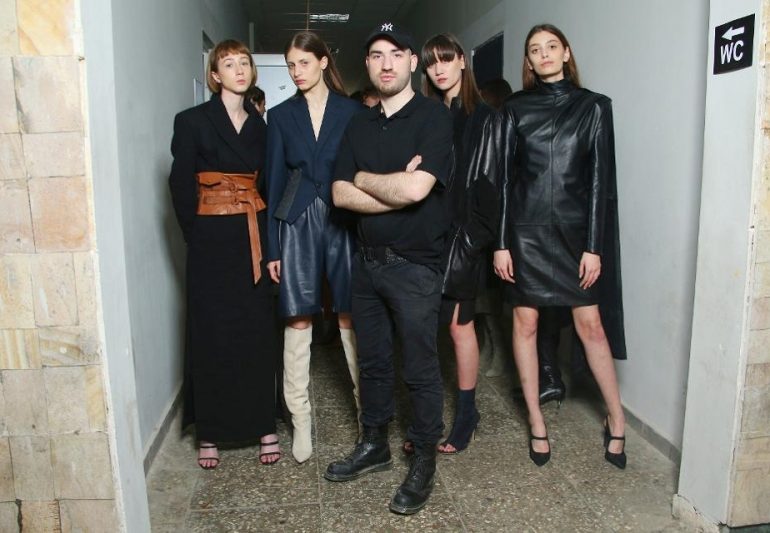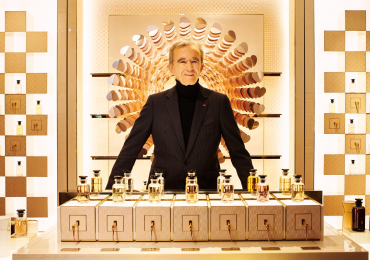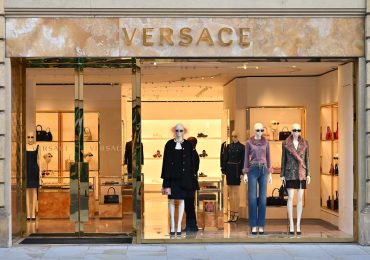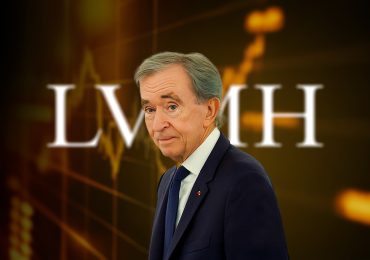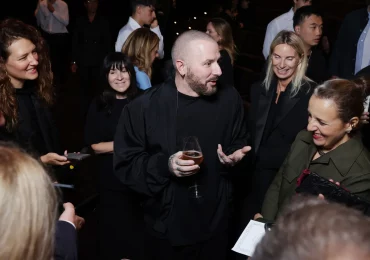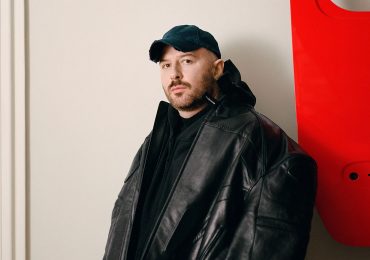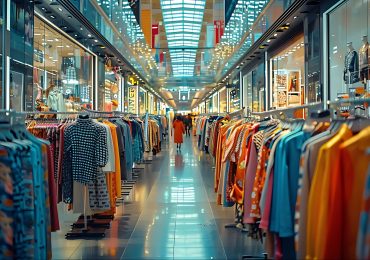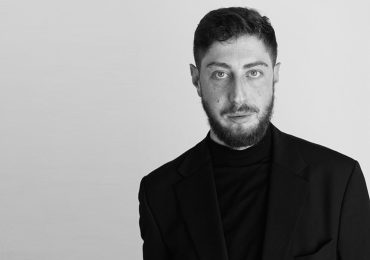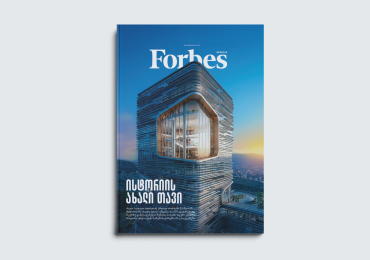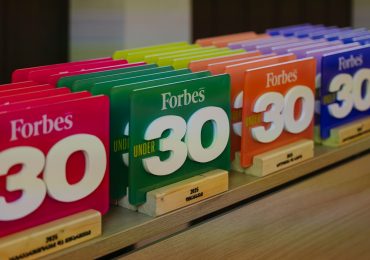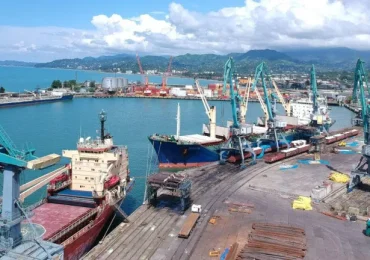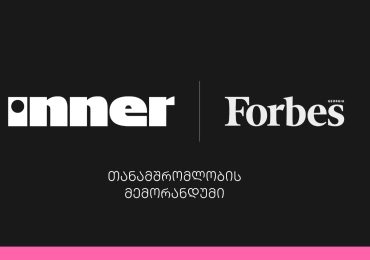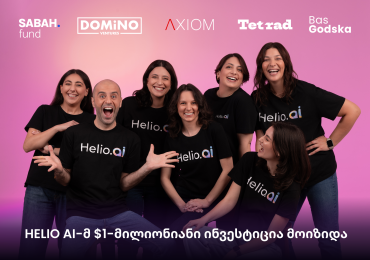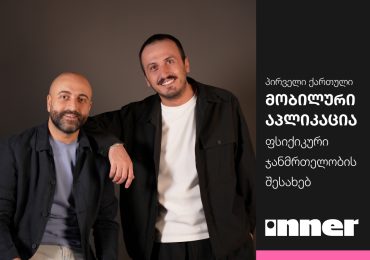Fashion is expanding its borders in more ways than one. Primarily, it has become more widespread in terms of visibility, which is a result of the internet and social media platforms giving an entryway to emerging labels that may not normally have the capital to stage runway presentations to respective retailers and members of the fashion press. Even then, getting one’s foot in the door often warrants a move to one of the fashion capitals—Paris, Milan, New York or London—to really solidify one’s standing and create buzz. But this is no longer the case. In addition to Instagram and Twitter opening up the field, fashion weeks from across the globe are springing forth in abundance, giving more attention to designers in regions outside the industry’s perceived confines.
As demonstrated last week, Tbilisi, Georgia (of all places) has become a cultural hub of creativity, taking over the social media feeds of top editors, street style photographers, store buyers and, essentially, anyone that works in the global fashion industry. The cause for the interest and trek to the hilly city on the banks of the Kura River? Mercedes-Benz Fashion Week Tbilisi: a weeklong event that showcased a range of budding talents from all parts of Georgia. Its corporate sponsor Mercedes-Benz, the German automobile manufacturer, who also underwrites similar activations in other lesser-known areas, was keen on showcasing how forward-thinking fashion can come from virtually anywhere.
“It began 23 years ago in Australia, which was the first fashion week that we had,” explained Caroline Pilz, the Head of Product Placement and Fashion Sponsoring at Mercedes-Benz. “Then in 2007, we started to initiate fashion as a global sponsoring platform.”
“We are a huge brand and are promoting engagement,” added Mona Moll, who is an officer on the global communications team at the company. “I think we can do something to help emerging talents, and have them not go to New York, for example. We have 50 platforms around the world that are involved in our International Designer Exchange Program. We are helping designers who are great within their market, but need help stepping out internationally.”
Indeed, garnering an international presence is an uphill battle that many emerging labels face, especially in a country like Georgia—which, until fairly recently, had little distinction in the fashion community. All that changed when designer Demna Gvasalia came into prominence with his brand Vetements in 2014. With his first few collections, the Georgian-born designer received rave reviews and got scooped up by leading boutiques across the globe. He is lauded for bringing a streetwise, decontructivist edge to fashion. He toys with overblown proportions on blazers and coats; plays with asymmetrical hemlines on skirts and sleeves; and combines corporate and sporty styles seamlessly—think: puffer coats over two-piece suits. (He also makes very, very expensive hoodies). This directional aesthetic soon caught the attention of the bigwigs at luxury conglomerate Kering, who appointed Gvasalia as the artistic director of Balenciaga in 2015. With that, Georgian fashion was put front and center, and interest in other designers in the country began to whet.
Building upon this momentum is Sofia Tchkonia, the creative director of Mercede-Benz Fashion Week Tbilisi. She is, almost singlehandedly, bringing awareness to other great fashion designers in her home country, aiming to show the global community that Gvasalia is not the only name to consider when one thinks of Georgian fashion. There are other talents who, by and large, share the same vision and have similar upbringings that inform their designs.
Indeed, most are Gen X-ers who grew up in the ’80s, during a time when Georgia was seceding from the former Soviet Union. The boxy shoulders, bulky jewelry, slouchy boots and other recycled styles from that decade, which are persistent in Gvasalia’s collections for both Vetements and Balenciaga, were also omnipresent in the output of many of his compatriots. Seven, in particular, stood out, demonstrating how Mercedes-Benz Fashion Week Tbilisi is a growing force to be reckoned with.
Situationist
Situationist’s Irakli Rusadeze is too young to have lived through Soviet control (he’s only 27), but its after-effects certainly reverberated, influencing his designs. “We are not a brand that just shows clothes,” he said. “I think fashion is a way to protest. Georgian culture is deep, and I wanted to show that we don’t have to be associated with the Soviet Union.”
This can be seen on a number of pieces with subtle rouched sleeves and sharp tailoring (read: characteristics of classic Georgian attire) on long grey wool blazers and earthtone trench coats made of leather. And though he pumped up the volume on a few all-black looks, owning to the fact that he was also inspired by pictures from the ’80s, his stellar collection is, at its core, a cool, elegant take on his country’s traditional style.
Lako Bukia
Lako Bukia is no stranger to the international stage. She has shown at London Fashion Week, along with various catwalks across Europe. This experience was certainly pronounced in her collection, which showcased her deftness with cut, proportions and choice of prints, color and fabrics. Buttoned-up, ankle-length dresses in vibrant colors were made even more interesting with Fortuny-creased swaths across the shoulder or leg. Elongated ribbed sweaters had large viscose braids attached to the hip, which added dimension and gelled nicely with box-pleated skirts.
The pièce de résistance, however, were dresses and a bomber jacket cast in images of Georgia in the ’60s and ’70s. “The collection was inspired by my parents’ experience during the time of Soviet occupation,” she said. “So all the prints come from family pictures.”
Aka Nanita
Much like Lako Bukia, Aka Nanita didn’t have to look far for inspiration. As she said: “The music, the fabrics, the scene all come from my childhood in the ’80s, living in the Soviet Union.” She staged her show in a theater and had models sitting below ’50s-style hairdryers, and dressed them in an assortment of gingham shorts and jackets, pinstripe zoot suits, accessories made of upholstery fabric, pearl-studded coats and, most strikingly, band t-shirts—particularly one with David Bowie. “This represented a typical day for me, when I would go with my grandmother to the salon,” she said. “What was also very important is the music of the time: the Beatles and Bowie.”
The crux of the collection is that it played with ’80s themes, but not in a conventional way. Where others focus on the ultra-glamorous side of the decade, with linebacker shoulders and cumbersome jewelry, she looked at that time period as she lived it, which is perhaps why her pieces permeated an infectious girlish quality.
Célia Valverde
Célia Valverde is the only Spanish designer of the lot. She was given the opportunity to show in Tbilisi after winning the top prize at Madrid Fashion Week, as part of Mercedes-Benz’s International Designer Exchange Program. “The last fashion week in January, one of the Georgian designers came to Madrid, and the person that won the award came here,” she said.
And though she was vague about why her collection was chosen over others, simply expressing how she worked very hard, her clear point of view spoke volumes. “Motown is always my inspiration,” she said, which was evident in her use of pink paillettes on languid dresses and suits that imbued a Diana Ross-esque quality.
Aleksandre Akhalkatsishvili
Aleksandre Akhalkatsishvili is a name that draws a crowd in Tbilisi. As the designer at Matérial, one of Georgia’s oldest apparel manufacturers, he has won numerous awards and garnered a following among the well-dressed women in the city. So when it came it time to debut his first collection under his name, expectations were high. Luckily, he met them with gusto.
Akhalkatsishvili showed a strong collection that riffed off the high-octane fashions of Tbilisi’s go-to reference point—the ’80s. There were a bevy of bold-shouldered suits, oversized jackets, obi belts, knee-high boots, leather gloves and rouched pencil skirts. And though the Working Girl motifs were overriding, he managed to seep in effervescent undertones, utilizing jewel tones and adding more of a slouch to the silhouettes. “Because this is my first season for my own show, I tried to make everything more colorful and more feminine,” he said. “Usually, my aesthetic is very minimalistic, but for my first collection, I wanted to focus on something new and different.”
Lado Bokuchava
Like Akhalkatsishvili, Lado Bokuchava also designs for Matérial and has a penchant for the excessive styles of the ’80s. Sizable suits and dresses with puffed shoulders in pastel colors were in abundance, which is expected from a designer who describes his aesthetic as “vintage-slash-classic meets ’80s-undergournd.” But what truly wowed—and what deviated from the norm—was the way he played with proportions and added carefully considered details.
For example, a seafoam-green skirt suit with pod-shaped gold buttons was paired with white chiffon cape, providing softness in the front and drama in back. The look was exciting from every angle. The same sentiment can be applied to other pieces, where Bokuchava flared the skirt more, cinched in the waist a couple of inches or elongated the pants. His use of corduroy on two suits, in varying shades of blue or orange, were also noteworthy. To be sure, there was an otherworldly element in each of designs that perhaps didn’t make for great clothes—but certainly makes for great fashion. Then again, he did express how he is “fascinated with spaceships.”
Babukhadia
Nino Babukhadia was one of the few designers to zone in, almost entirely, on menswear. For her collection, she combined sporty elements with classic tailoring and streetwear-inspired silhouettes for both men and women. “It’s a more of a unisex style,” she said.
She, like Valverde, is part of International Designer Exchange Program, and had that chance to show at Madrid Fashion Week. Now that she’s back in her home country, she sees more opportunities opening up, but also understand that there is still a long way to go. As she said: “Its very hard but interesting for me, for us.”
Source: Forbes.com


